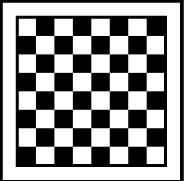Marcel Duchamp: The Intersection of Chess and Art
Marcel Duchamp: The Chess Master and Artist
Marcel Duchamp, the renowned artist known for his provocative and groundbreaking works, had a lesser-known passion for chess that rivaled his love for art. Duchamp, who famously turned away from traditional painting to embrace conceptual art, found solace and challenge in the intellectual game of chess.
For Duchamp, chess was not just a hobby—it was a serious pursuit that he approached with the same dedication and focus as his artistic endeavors. Some art critics even argue that chess held a more significant place in Duchamp’s life than art itself. The game appealed to his analytical mind and provided a platform for him to explore new ideas and concepts.
The Intersection of Art and Chess
Marcel Duchamp’s fascination with chess began early in his life, as he learned to play the game from his brothers. While initially playing for pleasure, Duchamp soon found a way to merge his two passions by incorporating chess themes into his artwork. His paintings, such as “The Chess Game” and “Portrait of Chess Players,” depicted his brothers engaged in intense chess matches, showcasing his deep connection to the game.
As Duchamp delved deeper into the world of chess, he found himself drawn to the strategic complexities and mental challenges it offered. His time in New York and Buenos Aires further fueled his passion, as he immersed himself in studying the games of chess champions and honing his skills on the board.
A Master of Chess
Marcel Duchamp’s dedication to chess eventually led him to pursue a professional career in the game. He participated in tournaments, played against top players, and even designed his own unique chess set with color-coded pieces to enhance the playing experience. Despite his innovative approach to art, Duchamp adopted a more cautious and strategic style in chess, adhering to classic principles and theory.
While Duchamp’s aspirations of becoming a professional chess player did not fully materialize, his impact on the chess world was undeniable. His involvement in the Marshall Chess Club and collaborations with chess theorists showcased his deep knowledge and passion for the game.
A Lasting Legacy
Marcel Duchamp’s love for chess continued until the end of his life, as he shared his passion with friends and collaborators. His final performance, “Reunion,” with composer John Cage, combined music and chess in a unique and innovative way, highlighting Duchamp’s enduring influence on both art and chess.
Marcel Duchamp may have been known as a groundbreaking artist, but his legacy extends beyond the world of art to the realm of chess, where his intellect, creativity, and passion left a lasting mark.
